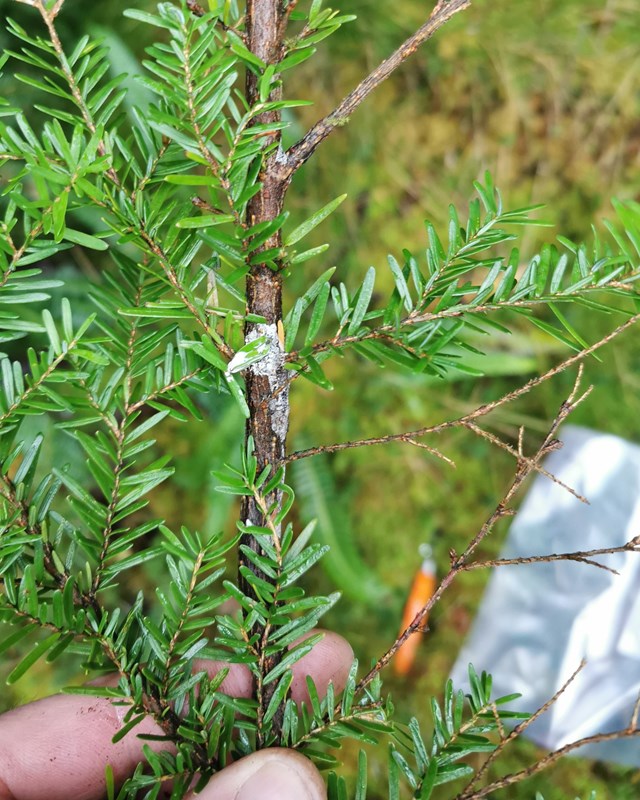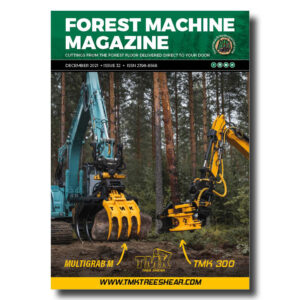Scottish Forestry, woodland managers, landowners, the forest industry and tree nurseries are being urged to be vigilant following the discovery of P.pluvialis near Loch Carron in the north west of Scotland.
Following this finding, Scottish Forestry will introduce a demarcated area around the infected site to help avoid accidental spread of the pathogen.
P.pluvialis is a fungus-like pathogen known to affect a variety of tree species, including western hemlock, Douglas fir, tanoak and several pine species (in particular radiata pine).
It is reported to cause needle cast (where needles turn brown and fall off), shoot dieback, and lesions on the stem, branches, and roots.
It was found for the first time in the UK in 2021 on western hemlock and Douglas fir and has now been detected in Devon, Cornwall and Cumbria in England and now near Loch Carron in Scotland.
For more information on P. pluvialis a symptom guide has been prepared based on what has been observed in England. Landowners are asked to report any suspect trees via TreeAlert.
Related Posts
Lorna Slater, Minister for Green Skills, Circular Economy and Biodiversity said:
“Following the established biosecurity protocol we are taking swift action against this finding of Phytophthora pluvialis. We are imposing a movement restriction in the area of the find at Loch Carron and will continue targeted inspections at potential high risk sites across Scotland.
“We are asking the forestry industry and landowners to help tackle this pathogen and avoid its spread. Please check the health of western hemlock and Douglas fir trees on your land. Key symptoms to look for are lesions on the stem, branch or roots and report any suspect tress via Tree Alert immediately.
“We also want to emphasise that everyone visiting the countryside and our woods can help prevent the spread of pests and pathogens by taking simple steps and ensuring they clean their shoes, bike tyres and pet’s paws before visits. Everyone has a part they can play in protecting our woodlands.”
As the disease has never been detected in Europe before, research is ongoing to understand if other potentially susceptible species could become impacted. This will help inform which control measures are appropriate and the potential impact this pathogen could have on the landscape and the forestry sector.
Scottish Forestry will continue to work with partner agencies across the UK to share information, experience and understanding to ensure a joint approach to monitoring and managing the situation.
-
That’s a remarkable amount of work hours for a single machine, the Norcar 600 owned by Erkki Rinne is taken well care of, it even has the original Diesel engine.
-
Kieran Anders is a forestry contractor working in the lake district. His work involves hand cutting and extracting timber using a skidder and tractor-trailer forwarder.
-
It is not possible to eliminate chain shot, but there are simple steps that can be taken to reduce the risk.
-
Arwel takes great pride in the fact that the mill has no waste whatsoever, “the peelings are used for children’s playgrounds, gardens and for farm animals in barns in the winter and the sawdust has multiple uses in gardens and farms as well.
-
Timber hauliers need to encourage young blood in, and also look after the hauliers we have, we need make the sector a safe and positive place to work.
Find Us On
Forest Machine Magazine is written and edited by a forest professional with over 40 years hands on experience. We are dedicated to keeping you informed with all the latest news, views and reviews from our industry.
To support us you can subscribe to our bi-monthly magazine which is delivered to your door from only £30 per year.
Subscribe here
#homeoflogging #writtenbyloggersforloggers #loggingallovertheworld
-
 Issue 32£6.00
Issue 32£6.00


